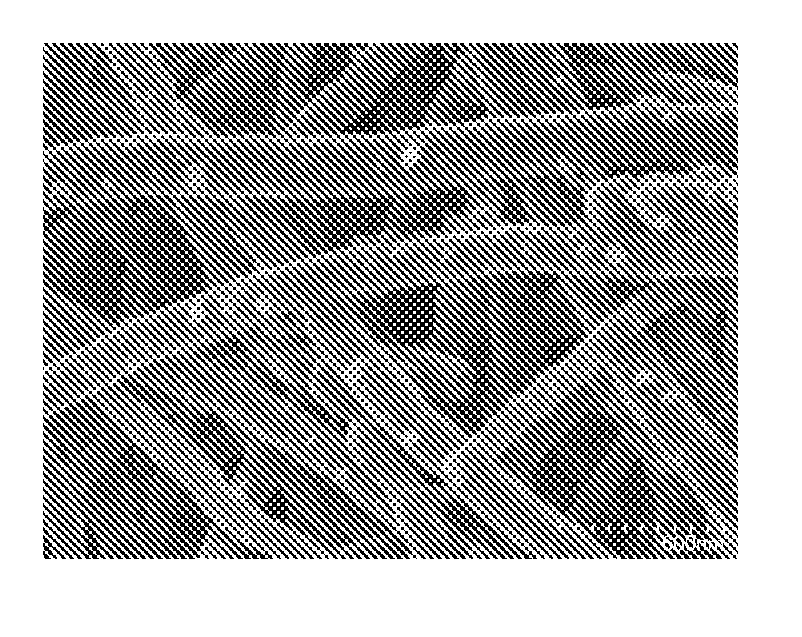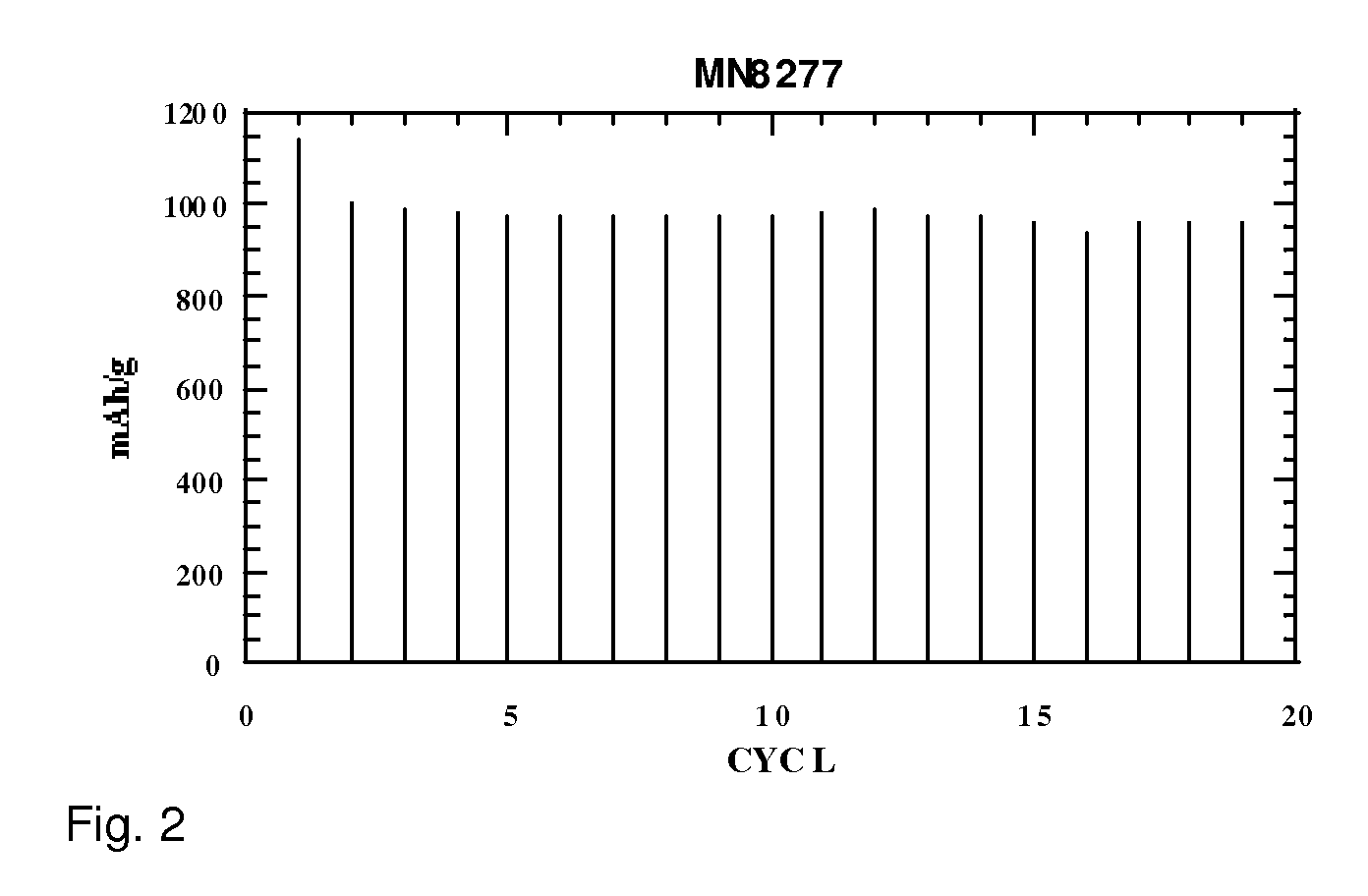Method of depositing silicon on carbon materials and forming an anode for use in lithium ion batteries
a lithium ion battery and carbon material technology, applied in the direction of non-aqueous electrolyte cells, cell components, electrochemical generators, etc., can solve the problems of rapid loss of capacity upon cycling, degrade the performance of the battery cell, and limit the use of carbon-silicon alloys for lithium batteries
- Summary
- Abstract
- Description
- Claims
- Application Information
AI Technical Summary
Benefits of technology
Problems solved by technology
Method used
Image
Examples
Embodiment Construction
[0029]We have found that deposition of silicon onto carbon materials such as vapor grown carbon nanofibers allows the carbon nanofibers to function as an insertion host as well as a high surface area support for the silicon, connecting the carbon and silicon electrically and accommodating volume changes resulting from a lithiation-delithiation process when the resulting alloy is used as an anode.
[0030]The silicon alloy material is bonded to the carbon nanomaterial through an interphase region comprised of the alloy material and carbon. By “interphase,” it is meant the transition region between pure carbon and pure silicon, which enhances the adherence between these two phases. In one embodiment, the interphase comprises silicon-carbon compounds such as silicon carbide.
[0031]The resulting silicon-carbon alloy exhibits high energy capacity and high power capability when used as an anode in a lithium ion battery cell. The resulting anode provides a significant increase in energy capaci...
PUM
| Property | Measurement | Unit |
|---|---|---|
| temperature | aaaaa | aaaaa |
| temperature | aaaaa | aaaaa |
| diameter | aaaaa | aaaaa |
Abstract
Description
Claims
Application Information
 Login to View More
Login to View More - R&D Engineer
- R&D Manager
- IP Professional
- Industry Leading Data Capabilities
- Powerful AI technology
- Patent DNA Extraction
Browse by: Latest US Patents, China's latest patents, Technical Efficacy Thesaurus, Application Domain, Technology Topic, Popular Technical Reports.
© 2024 PatSnap. All rights reserved.Legal|Privacy policy|Modern Slavery Act Transparency Statement|Sitemap|About US| Contact US: help@patsnap.com










